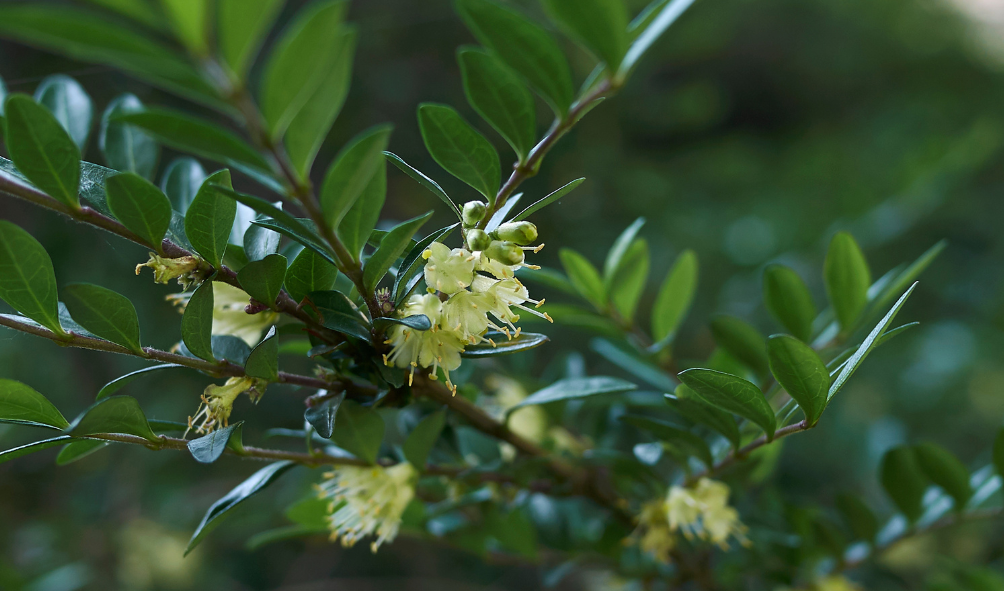
How to Pronounce Ligustrum Ovalifolium

Embarking on a gardening adventure brings its own set of challenges and joys, from deciphering the needs of various plants to mastering the botanical lexicon. Among the leafy challenges is the elegant yet often mispronounced Ligustrum ovalifolium. Yes, you read it right—Ligustrum ovalifolium. It's not just a plant; it's a linguistic puzzle waiting to be solved. Today, let’s unfold this mystery together and ensure that by the end of this read, you’ll not only know how to pronounce Ligustrum ovalifolium but will also be well-versed in its care, significance, and more.
A Quick Dive into Botanical Latin
Before we tackle the pronunciation head-on, let's take a moment to appreciate why plants like Ligustrum ovalifolium have such intricate names. Botanical Latin serves as a universal language that transcends regions and languages, allowing gardeners, botanists, and plant enthusiasts worldwide to speak about plants with precision. Understanding the roots (pun intended) of these names can often give insights into the plant's characteristics, origin, and lineage.
When it comes to the proper pronunciation of botanical names, such as "Ligustrum ovalifolium," it's essential to approach it with clarity and precision. Pronouncing plant names accurately not only helps in effective communication but also demonstrates a deeper understanding and appreciation of the subject matter.
Pronunciation of "Ligustrum ovalifolium":
Ligustrum ovalifolium is a species of hedge plant commonly known as the "Japanese Privet." Its scientific name may appear somewhat daunting at first, but breaking it down can make it much more approachable.
Ligustrum: Pronounced as "li-GUH-strum", with the emphasis on the first syllable, "li." The "GUH" is pronounced as a soft "g," similar to the "g" in "go."
Ovalifolium: This word can be divided into two parts for easier pronunciation. First, we have "o-VAL-ee-FOH-lee-um." The emphasis falls on the second syllable, "VAL."
To assist you further in mastering the pronunciation, here's a table with a breakdown of each syllable:
Syllable
Pronunciation
Li-
li
Guh-
GUH
Strum
strum
O-
o
Val-
VAL
Ee-
ee
Foh-
FOH
Lee-
lee
Um
um
Now that you have a clear breakdown of how to pronounce "Ligustrum ovalifolium," you'll be able to confidently discuss this species and impress fellow enthusiasts with your botanical knowledge. Whether you're exploring hedge options or simply deepening your understanding of plant names, precision in pronunciation is a valuable asset.
Common Mistakes in Pronouncing "Ligustrum ovalifolium":
Pronouncing botanical names can sometimes feel like navigating a linguistic labyrinth. "Ligustrum ovalifolium," though intriguing, poses its own set of challenges. In this section, we will explore some of the most common mistakes made when attempting to pronounce this scientific name, shedding light on the pitfalls to avoid.
Mispronunciation of "Ligustrum":
Mistake: One of the most frequent errors is misplacing the emphasis on the wrong syllable. Many may pronounce it as "li-GUS-trum," where the emphasis falls on "GUS," creating an incorrect cadence. Correction: The correct pronunciation is "li-GUH-strum," with the emphasis on the first syllable "li" and a soft "g" sound, similar to "go."
Misinterpretation of "ovalifolium":
Mistake: The second part of the name, "ovalifolium," often leads to misinterpretation. Some may attempt "oh-VAL-ee-FOL-ee-um," emphasizing "VAL" and "FOL" incorrectly. Correction: To pronounce it accurately, break it down into "o-VAL-ee-FOH-lee-um," with the emphasis on the second syllable, "VAL."
Ignoring the "U" Sound:
Mistake: Neglecting the "U" sound in "Ligustrum" can result in an incomplete pronunciation, as some might say "li-GIS-trum." Correction: Ensure you include the "UH" sound, making it "li-GUH-strum."
Now, let's visualize these common mistakes in a clear and concise table for easy reference:
Mistake
Correct Pronunciation
li-GUS-trum
li-GUH-strum
oh-VAL-ee-FOL-ee-um
o-VAL-ee-FOH-lee-um
li-GIS-trum
li-GUH-strum
By recognizing and rectifying these errors, you can confidently pronounce "Ligustrum ovalifolium" like a seasoned botanist. Precision in pronunciation not only enhances your botanical conversations but also demonstrates your commitment to the fascinating world of horticulture.
Conclusion
In the fascinating world of plants and horticulture, every term, every name, and every pronunciation matters. Understanding how to pronounce "Ligustrum ovalifolium" not only adds a touch of sophistication to your botanical conversations but also deepens your connection to the world of hedges and shrubs.
Remember, you don't need to be a botanist to appreciate the beauty of nature, and you certainly don't need a tongue of steel to master the pronunciation of plant names. With our guide and a bit of practice, you'll be confidently rolling off "Ligustrum ovalifolium" in no time, impressing friends and fellow enthusiasts alike. So go ahead, embrace the world of botanical eloquence, and let your passion for horticulture bloom!
Frequently Asked Questions:
Why is it important to pronounce botanical names correctly? Correct pronunciation of botanical names is essential for effective communication among horticulturists, botanists, and gardening enthusiasts. It ensures clarity and accuracy when discussing plant species, preventing misunderstandings.
What is the origin of the name "Ligustrum ovalifolium"? The name "Ligustrum ovalifolium" has its roots in Latin. "Ligustrum" refers to the genus of plants to which this species belongs, and "ovalifolium" describes the shape of its leaves, which are oval.
Are there any common names for "Ligustrum ovalifolium" to use in casual conversations? Indeed, there are! "Ligustrum ovalifolium" is commonly known as the "Japanese Privet" or "Oval-leaved Privet." These names are easier to remember and pronounce in everyday discussions.
Can you provide a step-by-step guide to pronouncing "Ligustrum ovalifolium"? Absolutely! We've broken down the pronunciation into manageable syllables in our article, making it easy for anyone to learn. We believe in making complex pronunciations accessible to all.
Why should non-botanists bother learning such intricate names? Learning to pronounce botanical names correctly showcases your dedication to the subject matter, whether you're a gardener, nature lover, or simply an inquisitive individual. It elevates your conversation and understanding of plants.
Appreciate the creator